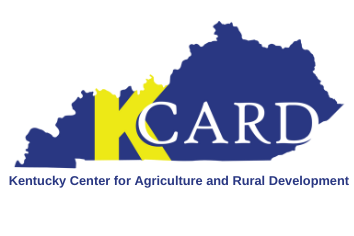The name of the game these days is social distance. So how do you accept payments from customers without getting closer than six feet or having to handle cash? Digital wallets are financial accounts that allow users to store funds, make transactions, and track payment histories by computer or phone. Here are some of the most popular options that will allow you to take payments without having to get a credit card reader (and some that connect with Square).
Q&A with KCARD: Coronavirus Funding
Question: Should I apply for “Coronavirus” money?
Answer: We are getting a lot of questions about coronavirus funding, so here’s what we do know and what we do not know.
Q&A with KCARD: Online Ordering Options
Selling online can be a great opportunity for businesses to make up for lower in-person sales, pre-order products for quick pickup or delivery, and increase customer base to those who might not attend markets. Choose an online ordering service that meets your needs and works with the systems you already have. Check out five online ordering options we have seen clients use.
Q&A with KCARD: Offering Gift Cards
People are requesting gift certificates to help support local farms and local food businesses. Offering gifts cards is a great way to let people support you during this time of crisis. So how do you set that up? It depends on how you take payment now, but you have some options…
Do You Have to Collect Sales Tax for Online Sales?
For most farm-based products, you do not collect and submit sales tax in Kentucky. However, if you are selling non-food items, such as soaps, painted gourds, or other farm-related crafts, you must collect and remit sales tax. In Kentucky, you do this quarterly. What if you sell online, in other states?
Crop Insurance and the Small Farm
Have you thought about getting crop insurance but assumed it would be too expensive or that it was only for large-scale operations? Crop insurance can be an option for your farm to help you cover the risk associated with weather or revenue. Today, the federal government helps cover 38% to 80% of your premium, depending on the amount of coverage, the policy, and what you grow.
Do You Really NEED It?
If you attended the National Farm Machinery Show this past week, the temptation of a bright, new shiny piece of equipment was a tempting one. Here is an “oldie but goodie” article from 2016 about making a big purchase for your operation.
How Do You Get Hiring Right?
Once you decide to hire someone, you need to lay the groundwork for keeping good employee records. What are some recordkeeping basics when you hire someone?
Hiring Your First Employee
Is it time? If you have been a one-man or one-woman shop and haven’t made a hire yet, what are the questions you should ask yourself before making that hire? Check out this post from KCARD staff on the questions they pose to businesses considering this step.














